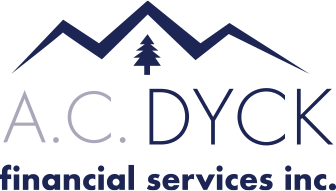Investment Choices
I recently had a conversation with a friend that focused on investing. My friend is quite engaged in a variety of investment strategies including options and margin trading. He is quite sophisticated as a trader and devotes a lot of time to this type of trading because the opportunities for gain and loss are significant. In fact, this gentleman considers this his daily work. I asked this gentleman if he uses investment funds, such as mutual funds and Exchange Traded Funds (ETF’s) within his portfolio. His answer was revealing because he does keep approximately 70% of his investable investments in a balanced growth portfolio while actively managing the remaining 30% within his trading account. This man went on to explain that in his opinion, the only easy thing about money is losing it. So, while his confidence in his investment skills is significant, he does rely on professional money managers to help lower his risk.
The focus on today’s blog is to provide an overview of the different choices available to investors in Canada. According to Morningstar Research, there are more than 5,000 different mutual funds for purchase on any given day. If you are working with a professional advisor, he or she should be able to recommend different investment solutions for the stage of life in which you are currently living. Financial advisors cannot be intimately knowledgeable on all funds that exist in the marketplace. For them to provide valuable service to you, advisors should be using 3rd party tools like Morningstar to help filter the “good” from the “not so good” investment funds choices.
Increasing the Opportunity to Make a Big Return! There are times when you may want to hit a “home run” within your portfolio. You can do this by narrowing the choices to be more specific within a sector. In the mutual fund universe, you can look for a sector such as Energy or Precious Metals or Technology to name just three. For example, 3 years ago, a different client invested 15% of her portfolio into a Precious Metals Fund which resulted in a 95% per cent return in 2019. Fortunately, she sold her “profit” and then redeployed that money into a lower risk “Growth Portfolio”. Had she just held the “Precious Metals” fund, her profits would have evaporated in the 3 subsequent years. The lesson here is to learn to take your profits or alternatively, take your losses, if you are going to be an active investor.
Most investors are passive in their style. This means that they rely on the fund manager to make the trades within the portfolio that they are in. This approach to investing is most popular because this allows each investor to stay focused on their jobs and families. Not everyone wants to be an “expert” in the investment world because they want to be an expert in their world. Many people are happy to have returns 3 or 4 percentage points higher than inflation or the GiC rate over a lifetime of investing. These people do not have expectations of retiring as a multi-millionaire, they are pleased to simply retire as millionaires. It is a choice they make given the way they want to live their lives.
Al’s Nuggets:
- Whenever you review your portfolio with your advisor, ask your advisor if he will analyze your portfolio using a tool like “Morningstar”. If your advisor does not know what Morningstar is, consider getting a new advisor.
- Determine if you are an aggressive investor or a passive investor or if you are somewhere in-between. Your advisor has questionnaires to help you determine your investment style and risk profile.
- More funds are not necessarily better than fewer funds. For example, if you have 5 different Canadian Blue-Chip funds, all five funds will probably hold the Canadian Banks. What’s the point of having 5 funds holding the same companies?
- Don’t spread your investment money between too many advisors. Have enough money with each advisor to be important to him or her!
